
Snowboard bindings are the link between you and your snowboard. They transfer your movements to the board and directly affect your control and comfort on the mountain. Choosing the right bindings is essential for every snowboarder, whether you're a beginner or a seasoned pro.
Parts of a Snowboard Binding
Before diving deeper, here’s a brief overview of the main components of a snowboard binding. This will make the rest of the guide easier to follow.

Highback
The vertical plate at the back of the binding. Supports your heel and calf. The angle can be adjusted.

Straps (ankle/toe)
These straps keep your feet in place. Make sure they’re snug but comfortable.

Ladder
The adjustable strap segment that controls tightness using ratchets.

Ratchets
The locking mechanisms that secure and release the straps. Should work smoothly.
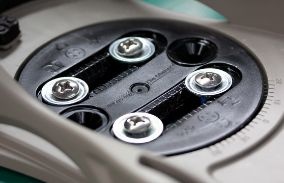
Disk
The part that mounts the binding to your board. Sets the angle and stance width.

Baseplate
The base of the binding that directly contacts the snowboard. Transfers power.

Toe Ramp
The front part of the binding where your toes rest. Adjust for a precise fit.

Forward Lean Adjuster
Allows you to set the angle of your highback for more or less forward lean.
Types of Snowboard Bindings
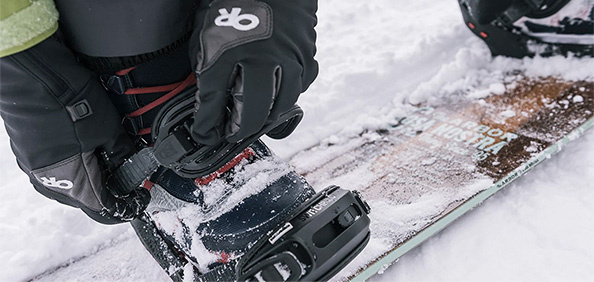
Traditional Bindings
These come with buckles and straps. They're versatile and widely used, suitable for riders of all levels and styles. They offer a secure and responsive fit.
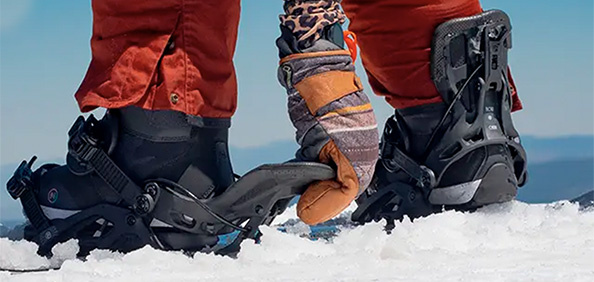
Speed Entry Bindings
Bindings like those from Flow are designed for fast in/out access via a rear entry system. You can slide in quickly without adjusting straps.
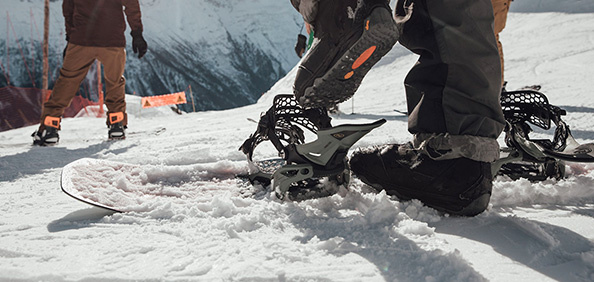
Step-In Bindings
Similar to ski bindings, these allow you to step in and go. Brands like Nidecker and Burton offer this option, known for its convenience.
Types of Snowboard Bindings
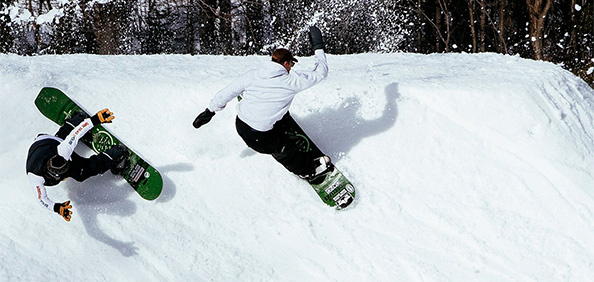
All-Mountain Bindings
- Versatile: Suitable for various terrains and riding styles.
- Medium flex: Responsive and flexible for control.
- Comfort & damping: Great for long days on the mountain.
- Compatible: Fits many board types and sizes.
- Mid-range price: Accessible for all levels of snowboarders.
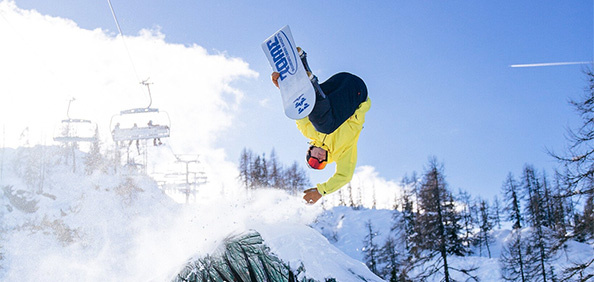
Freestyle Bindings
- Flexible: Soft to medium flex for freedom of movement.
- Lightweight: Easy to catch air during tricks and jumps.
- Designed for the park: Ideal for rails, boxes, and jumps.
- Short highbacks: Improve mobility for spins.
- Smaller disc: Allows for more board flex and tweakability.
- Comfortable straps: Secure support while performing tricks.
- Responsive: Maintain control on-piste too.
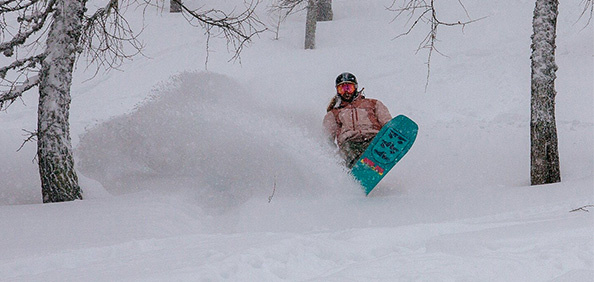
Freeride Bindings
- Stiff flex: Stability and control on challenging terrain.
- Wide disc: Better power transfer and pressure distribution.
- Raised highback: More calf support for aggressive turns.
- Adjustable angles: Customize your stance for slope and style.
- Extra cushioning: Enhanced comfort on rough trails.
- Better control: Ideal for carving and off-piste riding.
Minidisk vs. Standard Disk
Baseplates, also known as disks, can vary in size and shape. There are two common types: minidisks and standard disks. The choice between the two can affect your snowboarding experience.

Minidisk
Minidisks have a smaller contact area with the snowboard. This offers more board flex and reduces damping, making them ideal for freestyle riders looking for more freedom of movement.
Standard Disk
Standard disks have a larger contact surface with the board, offering more support and better shock absorption. These are often preferred by all-mountain and freeride riders who need more control.

Choosing the Right Binding Size
Selecting the correct binding size is just as important as choosing the right snowboard. The bindings should fit your snowboard boots perfectly to ensure a comfortable and safe ride.
Use the manufacturer’s size chart to determine the correct binding size. Measure your snowboard boots and match them with the recommended binding size. If the bindings are too large, your toes might extend too far over the edge of the board, causing toe drag in the snow.
How to mount your snowboard bindings
Stance Width
Most snowboards have a reference stance marked near the insert holes. If you're taller than average, you might want a wider stance. If you're shorter, a narrower stance can help. Choose a stance that feels most stable for you — similar to the way you’d position yourself to hit a baseball.
Binding Angles

Most riders opt for symmetrical angles, where the front and rear bindings are set to the same degree. This provides a balanced stance whether riding regular or switch. A popular choice for all-mountain riders is around 15° / 15°.
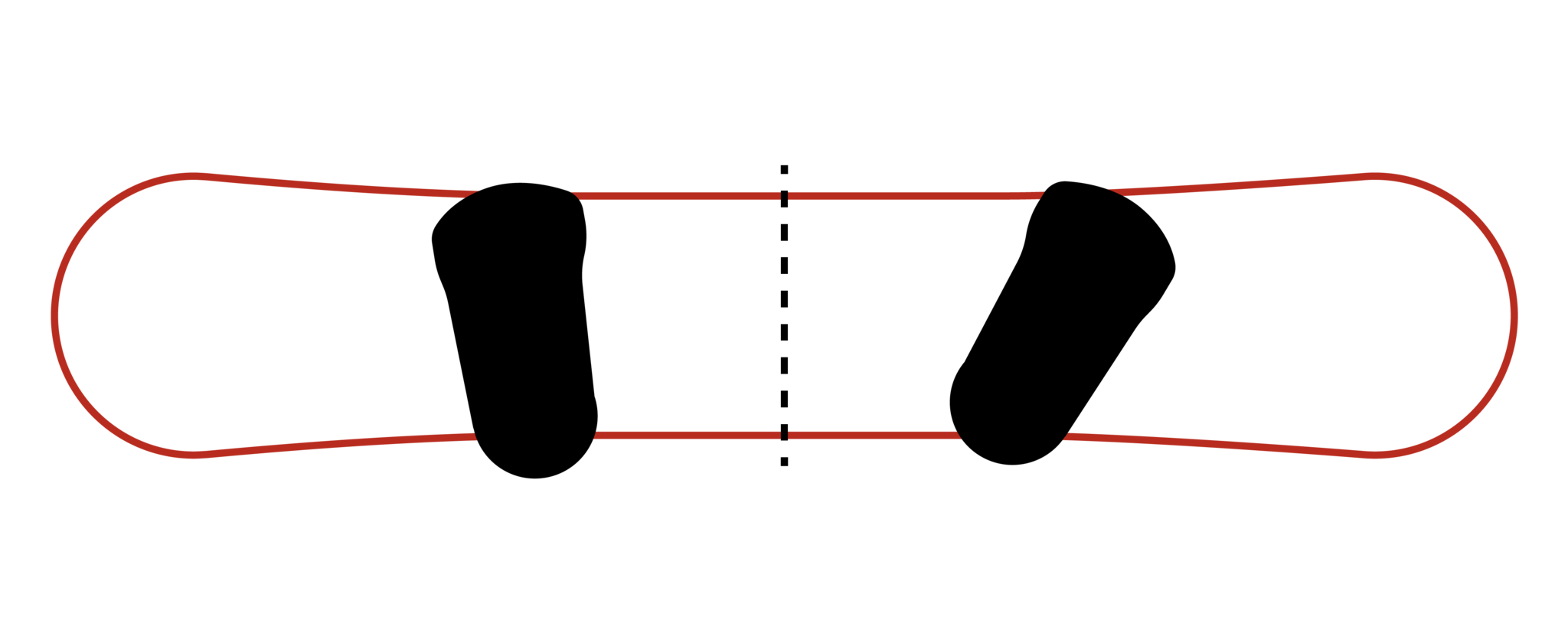
Some riders prefer a duck stance — with the front binding more open (e.g. 18°) and the rear binding slightly closed or negative (e.g. -12°). This setup is popular for park riders and helps with tricks and quick turns.
The Effect of Forward Lean
Forward lean refers to the angle of the highback on your binding. Increasing forward lean causes you to lean more forward, which can improve responsiveness in turns and carving. Reducing forward lean provides a more upright posture and more freedom of movement, ideal for freestyle riding.


